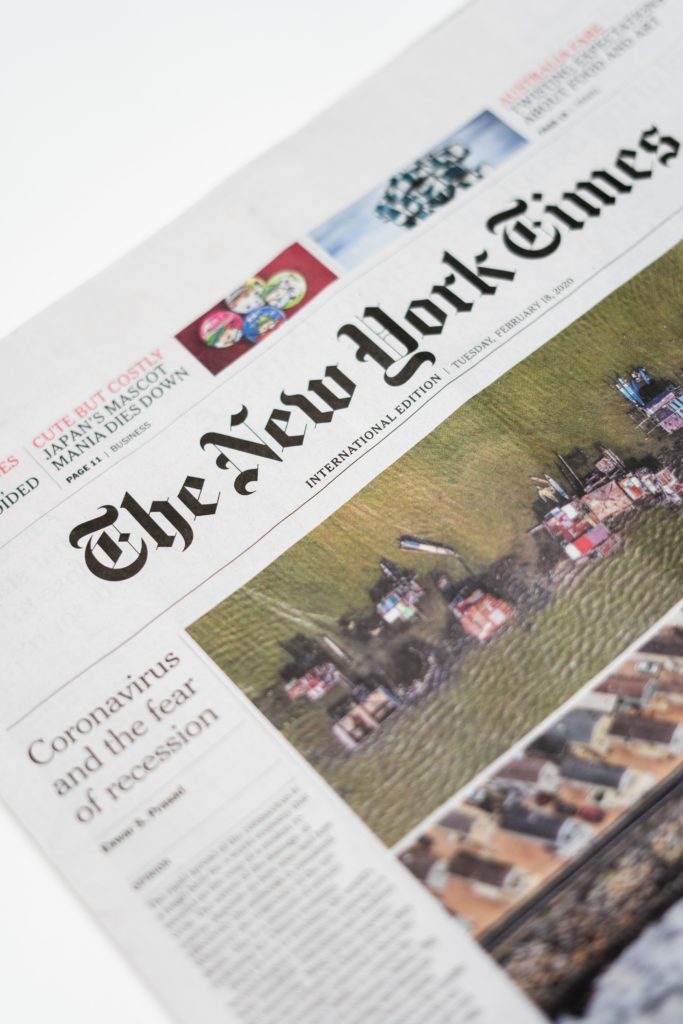How serious is the possibility of a recession hitting the US economy as the country continues to wade through disruptions caused by the war, COVID-19, and supply chain crisis? What might be the impact on some Solo 401k accounts and what might be done to get through the possible economic storm? These are the questions that many investors are asking and although there is no crystal ball, there is some insightful information worth sharing.
A Recession is Not Inevitable
The first serious talk of a possible recession began at the same time the Federal Reserve began increasing interest rates in March. At that time, the possibility of a recession appeared to be very low because economic growth and activity were robust. Four months later, the possibility of a recession has increased as the US economy faces several persistent headwinds. Not a single one of the headwinds alone is likely to slow the economy significantly, but the combination does increase the possibility in the future if all or most of them persist.
While the war, COVID-19, the supply chain crisis, and rising interest rates are real threats, the fact that the economy has consistently added more than a half million jobs every month strongly suggests that it will take many months to slow the hot economy down to a recession level. It is likely to take at least until the end of 2022 but more likely sometime in 2023, if at all. On the bright side is that the supply chain issues seem to be improving although not as quickly as desired. On the downside is that another global wave of the COVID-19 pandemic would certainly bring the robust job growth to a halt and unemployment would again reach chronic levels. Less predictable are the effects of the war in Ukraine and how high-interest rates will go. One of the strongest arguments for a recession is that one usually occurs after the Fed starts hiking interest rates.

A cycle of tightening credit is the most predictable indicator of a looming recession, but it does not make one inevitable. While it is true that almost all recessions followed a period of tight credit, history tells us the real cause is a shock in the economy. The 2001 recession came after the Dot.com stock market bubble burst. And the 2007–09 recession was preceded by the housing crash brought on by the banking financial crisis. According to the National Bureau of Economic Research, that contraction lasted only two months, from February 2020 through April (it had no connection to monetary policy).
The fact that recessions are directly caused by economic shocks and are only associated with interest rate hikes does not mean the talk of a recession is unfounded. The headwinds are very real, and the possibility of a recession has been consistently increasing. The oil price shock probably has not yet been fully felt across the global economy, but the price may have found a plateau (at least temporarily). Additionally, higher interest rates could uncover financial imbalances or systematic risks in the financial system. But a recession is not inevitable if these concerns are resolved over the coming months.
Another round of COVID with a mutated strain could bring the US and global economy to a halt. However, existing and new vaccines being available, along with intense ongoing research and better medical treatments have shifted the probability that another round will not have as severe of an impact as previous rounds.
The Fed’s tighter credit policy is already slowing the housing markets which isn’t necessarily bad for landlords or other investors planning to hold on to long-term real estate investments. However, tight credit is also slowing general business investments quickly, and serious global food problems are beginning to emerge as a result of the war and associated energy costs. As fear of a recession increases, foreign investors are shifting towards assets based on the US dollar. This strengthens the dollar and makes exports more expensive. That is one of the biggest threats to the current strong employment level. Rising unemployment softens demand for goods and services. As soon as unemployment becomes a problem, both businesses and consumers cut back on spending. This begins a spiral towards a recession as businesses cut back on production which leads to more unemployment. However, if managed correctly, a slow down in production and consumption could be the catalyst that corrects supply chain issues. Still, a strong supply chain is not much comfort to unprofitable businesses and unemployed workers. It is all about how the current headwinds are dealt with over the next several months.
Insights for Managing Your Solo 401k in a Recession
Forefront in most people’s minds is inflation. Recession and inflation are opposing economic forces. Inflation is when too much money is flowing through the economy and chasing too few products/services (more money causes high demand, and products/services are in low supply). A recession is a fall in the Gross Domestic Product (Real GDP) of the economy. Key characteristics of a recession are rising unemployment levels and assets falling in price (low demand from lack of employment results in over-supply of assets). If you think your investments could be volatile during a recession, making a plan early could be in your best interest.
A hedge against a recession, before it happens, can be the right time to rebalance your portfolio without panicking. Recessions don’t last forever and are typically followed by a period of robust growth. The Great Recession of 2007 – 08 lasted 18 months. It was followed by the longest economic expansion in U.S. history.
Almost all Solo 401k investors understand that attempting to time stock markets is an exercise in futility. It’s better to ensure that a retirement portfolio is invested in a way that doesn’t necessitate sudden changes if a slowdown occurs. Those closer to retirement should be focused on minimizing volatility, while younger workers can look for opportunities to grow their portfolios. The investors who have allocated properly should be able to ride out the waves of a recession without losing sleep.

Real estate as an alternative asset is already seen as a conservative investment and may be seen as even more of a wise investment as stocks and other paper investments continue to plunge in value. While no one can say with absolute certainty, the signs don’t point to a real estate slowdown in 2022 or 2023. Millennial population demographics and a decade-long shortage of new construction homes both point to a healthy and sustainable real estate market. Fannie Mae is calling for 5.6 million existing homes to be sold in 2022 and home prices are expected to continue rising.
Continue taking advantage of Solo 401k tax advantages. Investors shouldn’t be put off by gloom-and-doom financial headlines. Contributions and rollover funds can stretch further when the cost of alternative assets drops or remain flat for a time. Re-evaluating current contribution rates and potentially increasing that rate are strategic moves to consider when the economy seems to be in a slump. Sticking to a long-term retirement investment approach that includes consistent contributions can help balance out down periods over time.
When times are tough, investors may need to look to their Solo 401k as a source of cash. If this is you, the better choice is usually a Solo 401k Participant Loan without tax penalties and fees rather than a distribution that does trigger tax penalties. If you do need to take pre-retirement distributions, try to take them early before asset values hit lows during a recession, and make sure you set aside the cash you will need for the next 6 to 12 months to avoid being forced to sell at lower prices.
Keep risk capacity in mind. Risk capacity is different from risk tolerance. Risk capacity is the amount of risk needed to achieve investment objectives. A good Solo 401k rule during a recession is matching investments with current goals and capacity for risk. Once that’s been handled, the next step is avoiding reactionary moves. When a plan matches an investor’s goals and capacity for risk, their investments will perform as expected. When goals and risk tolerance don’t line up with investments, unexpected performance can spook you into making emotionally based investment decisions.”
Younger investors might want to be more brazen. Slumping asset prices can be an advantage for Solo 401k investors. Instead of pulling back or moving into more conservative assets, younger investors should be prepared to capitalize on lower prices in anticipation of long-term growth. Recessions occur about every four years, on average, and last about ten months. In every case, asset prices reached new highs after every recession. Looking for assets that may have taken a price hit but still maintain solid fundamentals could pay off when the economy rebounds and those same assets again rise in value. This could also be a suitable time for younger investors to consider making strong-performing investments using Roth Solo 401k funds that will deliver tax-free earnings during retirement.
Ways To Recession-Proof Your Retirement
For young people with time to recover, a recession is just another storm to be weathered. However, for those entering or about to entire retirement, a big hit to their portfolio now might become a bigger reduction in their retirement lifestyle than they are comfortable with.
The first thing is not to panic into making fear or emotionally based decisions to get out of investments at a loss with the mindset that you can still salvage something. Not only might you be selling at a low short-term value, but you’re also likely to miss the recovery when things turn around. During the Great Recession, the US economy only contracted by 0.1% beginning in 2008 and 2.5% in 2009. By 2010, the economy was growing at a pre-meltdown pace, and most assets recovered by 2013. The 2020 pandemic recovery was even faster. It began in late February or early March and was over by April. By the end of summer, losses were recouped, and economic growth has been happening ever since. The most robust economic growth in recent history.

Invest In ‘Real’ Assets. These include precious metals, real estate, land, equipment, private placement, natural resources, and much more. It’s a good idea for people nearing retirement to work their way out of volatile stocks and into real assets over time. Gold could be a sound investment before a recession. Gold has been doing well since 2019, and many consider it to be the “king of safe havens” from recessions and other market turmoil.
Separate your retirement income into specific purposes. Diversifying your investments across multiple assets is good and so is planning for short-term and long-term retirement funding. Retirees and near-retirees can use a bucketing approach for investments to fund spending now, soon, and later. This is more manageable and understandable than just one big pie chart with a bunch of assets that you hold in retirement. Money that you’ll need sooner should be in more conservative and dependable investments. Money that won’t be needed for several years should make up the riskier and potentially higher reward portion of your portfolio. A short recession should have a minimal impact this way.
Consider a Roth Solo 401k conversion if you’ll be liquidating assets during a recession. This can be particularly true if you’ll be liquidating stocks. Some consider the ideal time to fund a Roth 401k is when the market is low. By converting to a Roth, you can convert a greater value of your shares due to the market decline. Even though converting your traditional 401k to a Roth 401k means you’ll have to pay some taxes now, you’ll be paying fewer taxes than you would down the road when your investments were up because the value of your portfolio will probably be lower during a recession.
Have a fund for the ‘expected’ unexpected. This is especially important during volatile times. You want to have access to liquid funds. We all know the need to set aside cash for emergencies. Retirees or near-retirees should have enough cash to cover at least one year of expenses, and those not yet in retirement should have three to six months of expenses.
Rather than thinking of this as an emergency fund, it can be more constructive to think of this as “a fund for the expected unexpected” — because life happens.
Set Up Your Self-Directed Retirement Plan and Start Investing In Alternatives
Ongoing fluctuations in the stock markets along with a breakdown of investor confidence in corporate America are driving the demand for alternative investments with greater choice for retirement accounts. Investors now realize they can hedge against a recession and make other non-traditional asset investments using their retirement accounts.
Setting up a Solo 401k retirement plan is easy and allows for tax-deductible contributions much larger than an IRA or employer 401k. Importantly, it puts you in control with access to a world of alternative investment options.





